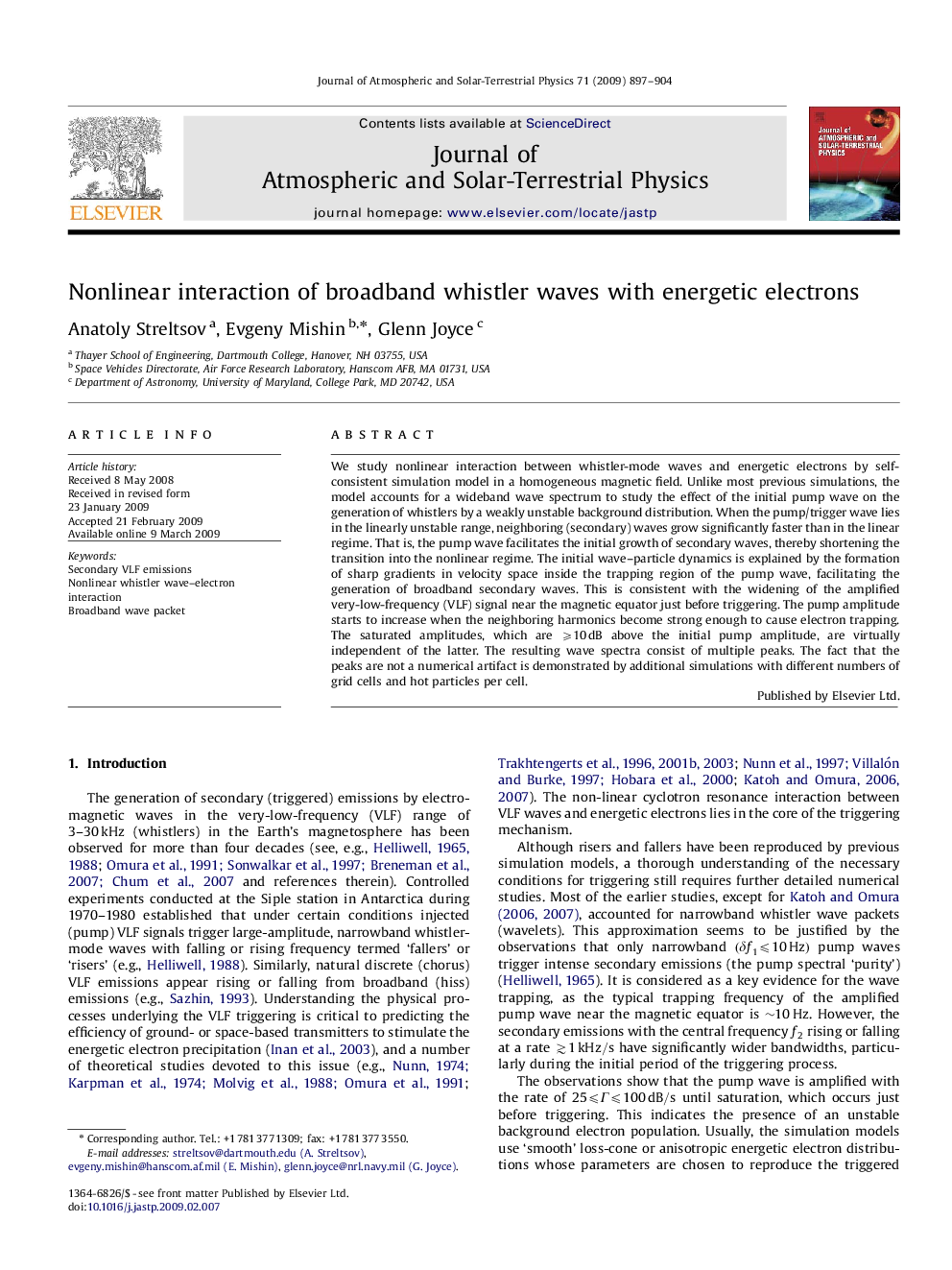| Article ID | Journal | Published Year | Pages | File Type |
|---|---|---|---|---|
| 1777840 | Journal of Atmospheric and Solar-Terrestrial Physics | 2009 | 8 Pages |
Abstract
We study nonlinear interaction between whistler-mode waves and energetic electrons by self-consistent simulation model in a homogeneous magnetic field. Unlike most previous simulations, the model accounts for a wideband wave spectrum to study the effect of the initial pump wave on the generation of whistlers by a weakly unstable background distribution. When the pump/trigger wave lies in the linearly unstable range, neighboring (secondary) waves grow significantly faster than in the linear regime. That is, the pump wave facilitates the initial growth of secondary waves, thereby shortening the transition into the nonlinear regime. The initial wave-particle dynamics is explained by the formation of sharp gradients in velocity space inside the trapping region of the pump wave, facilitating the generation of broadband secondary waves. This is consistent with the widening of the amplified very-low-frequency (VLF) signal near the magnetic equator just before triggering. The pump amplitude starts to increase when the neighboring harmonics become strong enough to cause electron trapping. The saturated amplitudes, which are ⩾10dB above the initial pump amplitude, are virtually independent of the latter. The resulting wave spectra consist of multiple peaks. The fact that the peaks are not a numerical artifact is demonstrated by additional simulations with different numbers of grid cells and hot particles per cell.
Related Topics
Physical Sciences and Engineering
Earth and Planetary Sciences
Geophysics
Authors
Anatoly Streltsov, Evgeny Mishin, Glenn Joyce,
